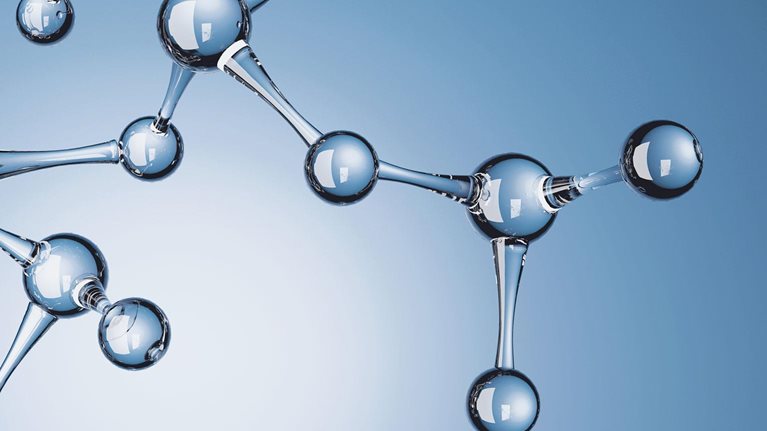Petrochemicals proved their resilience in 2021. Despite unexpected challenges, such as new COVID-19 variants, rising commodity costs, and supply chain disruptions, the petrochemical market tightened, leading to unprecedented value creation. Overall, the industry has seen healthy demand growth, as well as significant momentum for plastics recycling and decarbonization.
Careful study of five key factors and activities that affected the industry in 2021—demand recovery and profitability, unprecedented supply chain and production disruptions, regional dynamics, the circular economy, and decarbonization momentum—reveals a series of industry implications for 2022.
Strong demand recovery and profitability
As industrials gradually recovered and markets reopened after the initial shock of COVID-19 in 2020, demand for petrochemicals has continued to grow. High demand in the packaging industry led to continued resilience for polyethylene (PE) and polypropylene (PP), with growth of 5 to 6 percent from 2020 into 2021. Other plastics, such as polyethylene terephthalate (PET), polystyrene (PS), and polyvinyl chloride (PVC), each of which took a hit in 2020 with flat or negative growth, have rebounded at a rate higher than pre-COVID-19 levels (Exhibit 1). This recovery was mostly bolstered by the reopening of end markets. For example, as vaccination rates increased, so did the ability and desire to travel. As a result, the textile, construction, and transportation industries are on track with reopening businesses and retail outlets.

Strong demand recovery has supported margin expansion for most petrochemical players. Despite an initial drop in EBITDA in early 2020, the petrochemicals industry quickly rebounded and has subsequently been on a strong upward growth trajectory. In 2021, EBITDA by market cap for the top 100 petrochemical players expanded by 50 to 100 percent over pre-COVID-19 levels. The average EBITDA margin also increased to approximately 20 percent, compared with about 14 percent in 2019. While increased demand was a factor in margin growth, price spikes driven by supply disruption and market tightness also contributed.
Unprecedented supply chain and production disruptions
One drastic difference between 2021 and previous years was the emergence of significant supply chain constraints, which led to reduced trade and high shipping costs. Since fourth quarter 2020, port and associated supply chain congestion have had a negative impact on container capacity. Bottlenecks remained on the critical US West Coast, such as container vessel congestion and reduced labor availability at ports due to the pandemic. As a result, plastics shipping had to compete with higher-value goods, such as toys and furniture parts, for space on containers. This led to a significant trade flow decrease and an increase in shipping costs between regions (Exhibit 2). Taking high-density polyethylene (HDPE) as an example, trade dropped 30 to 50 percent in 2021, while shipping costs rose from $100 per ton to $500 per ton.

Regional production disruptions further exacerbated the problem. In February 2021, Winter Storm Uri caused significant capacity shutdowns in North America, which curbed a majority of ethylene and propylene supplies along the US Gulf Coast. Consequently, PE prices in North America spiked at record-high levels, increasing from $1,000 per metric ton to approximately $2,000 per metric ton.
Trade-flow constraints also kept market dynamics disconnected and prices divergent across geographies. Although the North American market for PE was tight (market undersupply), the market in Northeast Asia remained long (market oversupply). PE demand in the latter increased much more slowly, at about 1 percent from 2020 to 2021, well below the world average of 3 to 5 percent. This was partially due to China’s dual-control energy policy, which reduced the downstream conversion capacity.1 However, about five million metric tons per year (MTPA) of new PE capacity came online in the region in 2021, leading to a reduced utilization rate and much lower PE prices throughout Asia compared with the United States and Western Europe.
Varying regional dynamics
North American and European producers experienced historically high margins in the petrochemical value chain of ethylene and PE. In 2021, as oil prices gradually recovered to $70 per barrel, the cost curve for ethylene became steeper and favored Middle Eastern and North American producers with competitive ethane feedstocks. As a result, the North American ethylene margin nearly doubled over 2020 levels (Exhibit 3). The tight PE market, driven by production disruptions, also favored merchant PE producers, whose margins expanded to record-high levels of $600 to $900 per metric ton. Similarly, the ethylene margin in Western Europe recovered to pre-COVID-19 levels with significant expansions for PE producers because of market tightness and price spikes.

Asian PE producers, however, experienced less remarkable margins. In China, ethylene and PE margins have been negative since the second half of 2021 because of two major headwinds: rising oil prices increasing production costs for naphtha crackers and weak regional demand and market length putting pressure on local prices and further squeezing margins.
Regional differences also exist for the propylene and PP chain. The margin skyrocketed for North American and European nonintegrated PP producers—in 2021, the gross margin jumped from historical levels of approximately $150 per metric ton to more than $500 per metric ton due to production disruptions and the shortage of PP. North America also switched from net exports to net imports in 2022, but trade constraints made it harder to pull in imports. On the other side of the world, however, the PP market in Asia did not experience the same level of market shortage, leading to limited margin increases for PP players in that region.
Increasing momentum in the circular economy
In 2021, there were also new investments in recycling and renewable feedstock, primarily driven by strong customer demand and regulatory pressures. On the customer-demand side, more than 80 global consumer-packaged-goods (CPG), packaging, and retail companies made public commitments to reach 15 to 50 percent recycled content in their packaging by 2025.2 On the regulatory side, several regions and countries established more stringent rules to reduce single-use plastics and encourage recycling. For example, the European Plastics Strategy includes a tax on unrecycled waste from plastics packaging.3 Separately, China unveiled national standards for biodegradable plastic materials, such as drinking straws.4
Last year also saw several prominent investments announced in advanced recycling projects, particularly around PET monomer recycling, pyrolysis in conjunction with refining assets, and refinery conversions to bioproducts.5 Petrochemical companies are leading the way in these areas, committing to recycled, recyclable, or bio-based volumes in their portfolios. As such, we expect advanced recycling to satisfy 4 to 8 percent of total polymer demand by 2030, which would require more than $40 billion in capital investment.
Rising decarbonization
Publicly announced carbon reduction targets have resulted in material action in asset decarbonization, hydrogen, and clean energy with significant capital commitments. In 2021, dozens of the top petrochemical companies made long-term carbon neutral or net-zero emissions goals and medium-term emissions reduction goals (Exhibit 4). Players are materializing these commitments with activities and investments in asset-efficiency optimization; process setup change; carbon capture, utilization, and storage; electrification; and hydrogen. Other major capital investment commitments have been made across regions.

Outlook for 2022 and beyond
Following a remarkably strong 2021, we expect the petrochemical market to create significant but somewhat lower value in 2022. This will be driven by gradual resolution of supply chain disruption beginning in late 2022 and project start-ups throughout the year. Because supply chain issues are ongoing, the timeline for resolution could vary over the next 12 to 24 months. In a relatively optimistic view that considers the success of interventions from regulators, ports and other hinterland logistics systems could see congestion ease up in third or fourth quarter 2022. However, with pent-up demand and additional operations shocks, other estimates show recovery beginning in 2023 once significant container ship capacity is added to the market.
In addition, new petrochemical production capacities are expected to come online in 2022, potentially relieving market tightness and reducing price spikes. Thus, the spike in the industry value pool in 2021 is expected to gradually normalize in the near to medium term (Exhibit 5).

All things being equal, we expect the market to trade away the regional arbitrages that currently exist and return to fundamentals, eroding margins particularly in North America and Europe. However, many factors could affect this—for example, heightening geopolitical tensions could reduce the free flow of goods and have an impact on oil prices.
Over the long term, petrochemical players should consider investing in sustainability measures to differentiate themselves. There are multiple pathways to sustainability, including mechanical and advanced recycling, decarbonization, hydrogen power, low-carbon products, and products enabling sustainability in end markets such as solar and electric vehicles. Each of these pathways can result in substantial value-creating opportunities, including premium pricing for sustainable materials and access to high-growth, high-margin markets.
In deciding which sustainability pathway to take and at what scale, petrochemical players must consider customer needs and invest based on specific sustainability pledges or requirements from customers. Next, they should consider value chain participation for broader and sustained impact, including partnerships with upstream waste management companies, power generators, technology providers, or other industry groups, as well as with downstream customers.
For the petrochemicals industry, 2021 was a strong year marked by high earnings and profits, and upward momentum continues in 2022. That said, industry players should not become complacent. Supply chain disruptions remain a formidable challenge, and start-ups will need to be monitored closely. Ultimately, sustainability will be increasingly important in 2022 and over the long term, particularly in plastics recycling. Players would be well served to keep this in mind and take early actions to stay ahead of the curve.

